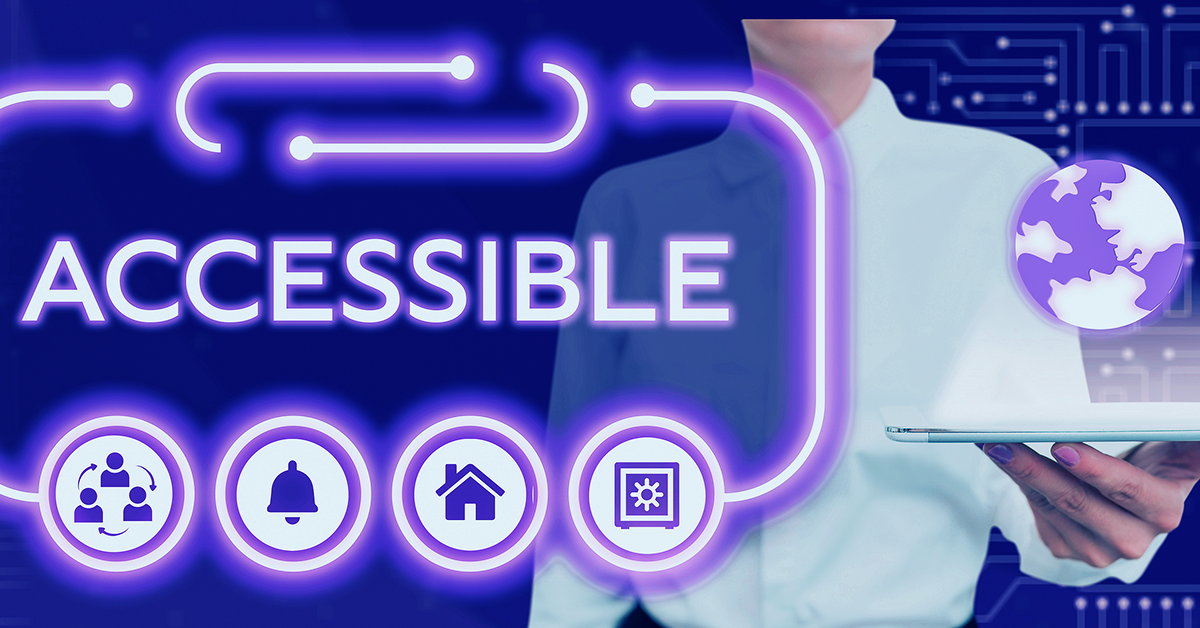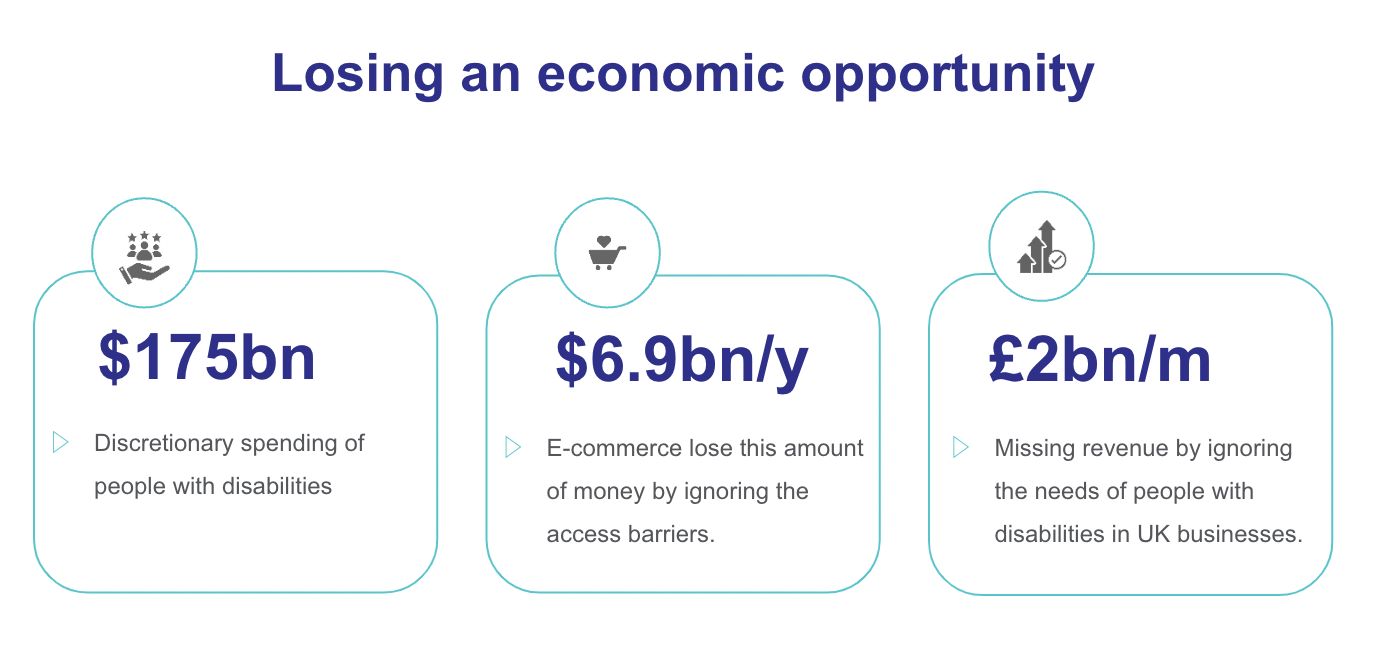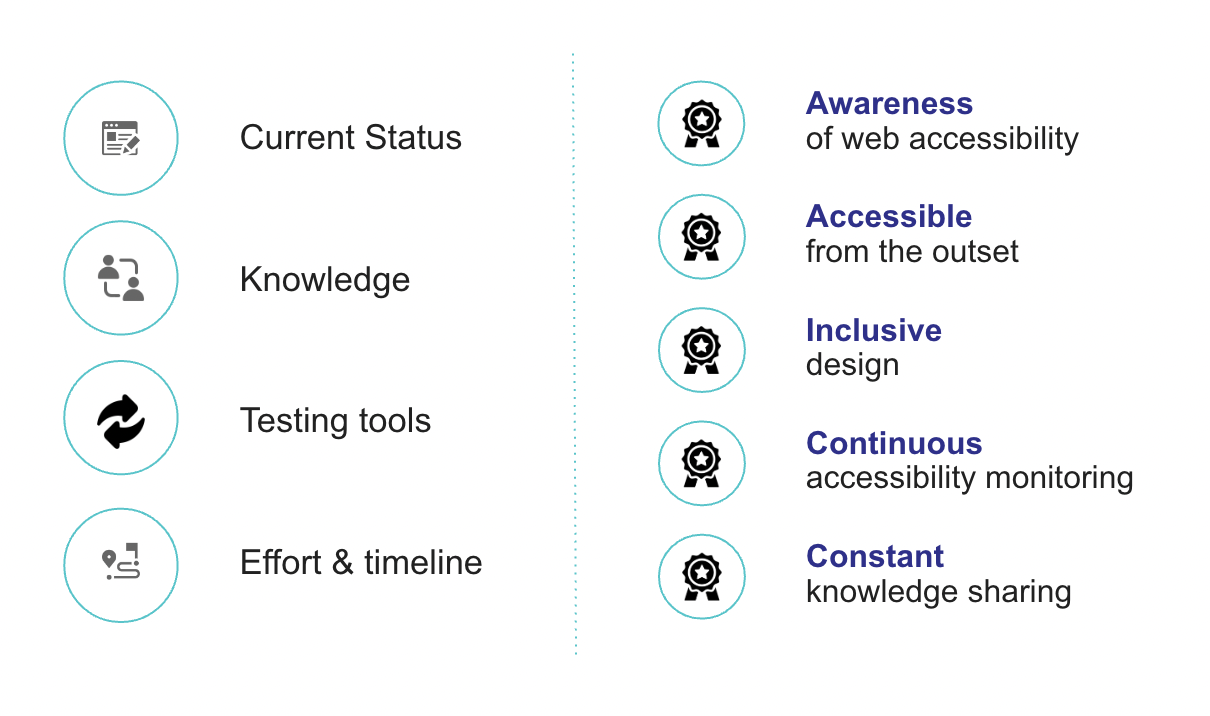When accessibility becomes business-critical

“If we use our own abilities as a baseline, we make things that are easy for some people to use, but difficult for everyone else.” - Julio Madeira, Microsoft Inclusive Design
Today, over 1 billion people (or 15% of the world’s population) have some form of disability. The number is even higher when adding those experiencing situational or temporary disabilities. This has massive implications for organizations in considering accessibility and usability. As a business, imagine the different groups of users within your core demographic: people with visual or auditory impairments, people who speak different languages, and people who have different needs for the way they engage with your platform.

The American e-commerce market loses $6.9 billion annually by ignoring access barriers for its consumers. Similarly, UK businesses are losing £2 billion a month in revenue by ignoring the needs of disabled people. Accessibility goes beyond ethics and has real ramifications on business.
The challenges of addressing accessibility
When we began working with a new client, we encountered many challenges of implementing an accessible solution for the first time. There was little awareness around the topic and few tools or frameworks to optimize and test for accessibility. In the process of delivering 2 new tenants and a new website, we also encountered evolving legislation around compliance, and the challenge of auditing accessibility levels.
The Cognizant Netcentric approach
Learning from our experience, we have built an arsenal of knowledge and expertise in designing for accessibility.

1. Create awareness of web accessibility
The best starting point is to create awareness by empathizing with the user. As a team, ask yourselves the following questions:
- Is the site logical and intuitive enough to navigate for a first-time user?
- If I close my eyes and navigate the page using the screen reader, is the site easy to follow?
2. Commit to accessibility from the outset
With open-source accessibility tools and plugins becoming increasingly available, it’s a better time than any to address accessibility from the beginning. It is much more efficient and effective to implement accessibility from the ground up than to retrofit it into legacy solutions and infrastructure.
3. Follow an inclusive design process.
When designing for accessibility, inclusivity needs to be at the forefront of the approach. This means rather than using our own abilities or the status quo as a baseline, we examine color contrast, readability, and usability from many perspectives based on the needs of different users.
4. Continue to monitor accessibility and share knowledge
Accessibility is an ongoing commitment as our needs and tools continue to evolve. It’s important to make sure the team is regularly benchmarking accessibility levels with every iteration of the platform, and building collective awareness and knowledge around this essential topic.
Why accessibility is important
Prioritizing accessibility results in an improved user experience for all, not just those experiencing disability. Consider that investing in accessible, inclusive experiences leads to strengthened brand presence, improved customer satisfaction, and colleague productivity while reducing your organization’s legal risks and the cost of retrofitting a solution to existing infrastructure. Organizations today are coming to terms with the importance of prioritizing accessibility as a baseline and at the outset of every experience.
At Cognizant Netcentric, we leverage our expertise and cutting-edge technology to help businesses incorporate accessibility into their platforms, taking a user-centric approach to delivering world-class experiences.